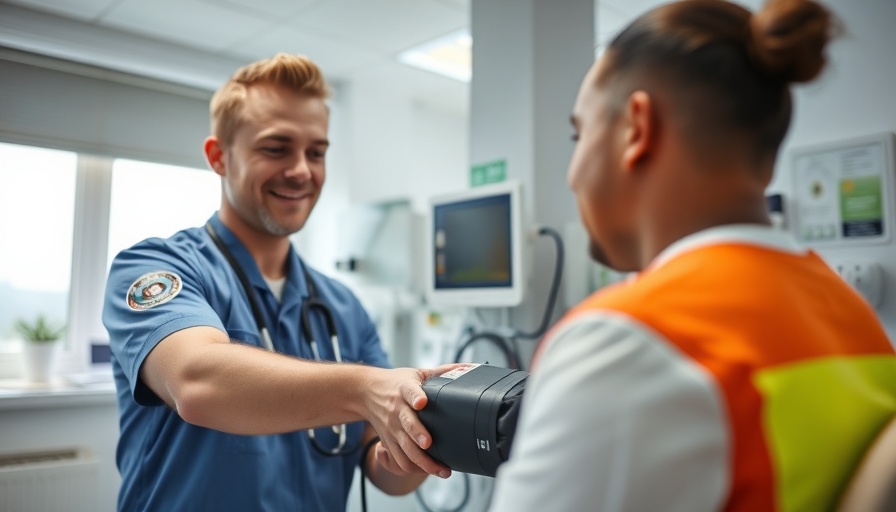
Reassessing the Premise of Genetics in Longevity
In the growing discourse surrounding health and longevity, recent findings have increasingly spotlighted lifestyle choices as pivotal determinants of life expectancy, often overshadowing genetic predispositions. It is now evident that adopting healthier living habits can significantly mitigate the risks associated with premature death from noncommunicable diseases (NCDs). Studies, including one published in a leading health journal, assert that lifestyle alterations can overshadow genetic factors in determining an individual’s risk of early mortality.
Interconnectedness of Lifestyle Choices and Health Outcomes
The comprehensive model developed through the National Health and Nutrition Examination Survey (NHANES) suggests that lifestyle-related risk factors, including smoking, diet, and physical activity, dramatically influence mortality outcomes. Data from over 38,000 subjects revealed that factors such as smoking exposure and diet quality can account for substantial differences in life expectancy across diverse demographic groups. Specifically, those who invested in a wholesome lifestyle—characterized by regular physical activity and a balanced diet—experienced a life expectancy advantage of up to two decades compared to their less health-conscious counterparts.
Benefitting from Life Changes: A Path to Longevity
This research underscores that even minimal lifestyle changes can yield commendable benefits in health outcomes. For instance, increasing physical activity and reframing dietary habits—such as reducing saturated fat intake—can lower the risk for heart disease, stroke, and other critical health conditions. Understanding that many premature illnesses are preventable through healthy lifestyle adjustments fosters a sense of empowerment among individuals.
Beyond Genetics: A Paradigm Shift in Health Policy
The implications of this paradigm shift extend far beyond individual health choices; they challenge the traditional focus of healthcare policies, which often emphasize genetic screenings and treatments. If lifestyle significantly trumps genetic predisposition, health programs and public health campaigns should pivot towards education and interventions aimed at promoting healthier living. The emerging consensus suggests that preventative strategies can significantly alter mortality rates; thus, governmental policies need to prioritize lifestyle-focused health initiatives.
The Role of Public Awareness and Education
Investing in public health education campaigns is paramount to raising awareness about the critical role of lifestyle in preventing NCDs. Simple actions—quitting smoking, adopting a diet rich in fruits and vegetables, and committing to regular exercise—could collectively forge a healthier society. Knowledge about these factors should be made accessible to empower individuals, irrespective of their genetic backgrounds.
Counterarguments and Broader Perspectives
While the preeminence of lifestyle choices is well-supported by statistical evidence, some argue that genetics still warrants consideration. After all, certain conditions rooted in genetic anomalies cannot be altered by lifestyle alone. For instance, genetic predispositions to diseases like cystic fibrosis or Huntington's disease highlight the importance of genetic factors in specific contexts. However, fostering a balanced discourse is essential; one need not dismiss the role of genetics but rather appreciate how lifestyle can act as a significant mitigating factor.
Practical Insights for Health Improvement
Moreover, promoting a lifestyle reflective of good health can lead to major savings on healthcare costs due to reduced incidence of chronic diseases. Local communities can benefit substantially from advocating programs that incentivize healthy living. Programs that collaborate with local governments and healthcare providers can tailor interventions that resonate with their specific populations—combining fitness programs with educational outreach to reduce health disparities.
Final Thoughts
In summation, the new understanding that lifestyle trumps genetics signifies a powerful shift in how societal health goals should be approached. Educators, policymakers, and healthcare professionals must converge to create a societal fabric that cultivates health-first attitudes. For individuals looking for hope against the curveball of their genetic makeup, adopting healthier lifestyle choices stands as a beacon of hope—a choice in their hands to foster a longer, pain-free life. The future holds a promise; one where healthier choices shape healthier lives.
 Add Row
Add Row  Add
Add 




Write A Comment